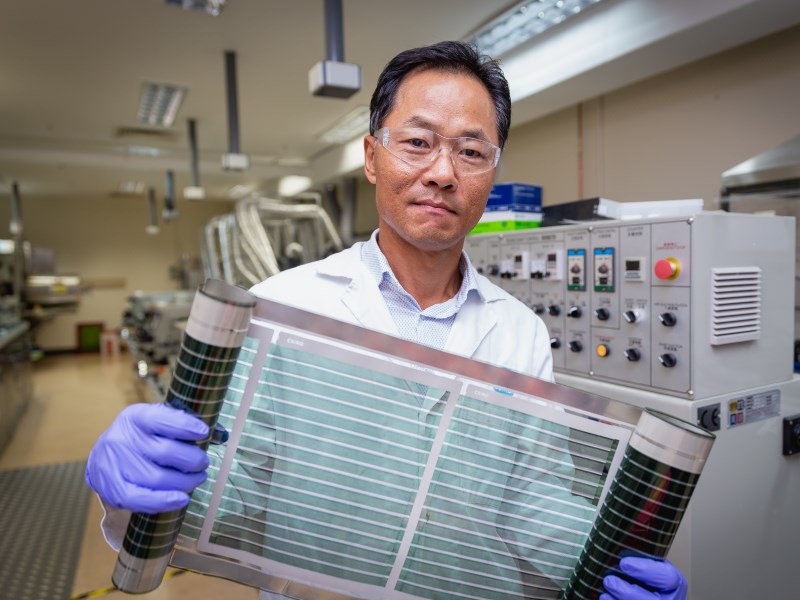The national science agency has claimed a new efficiency record for “roll-to-roll” printed solar cells, a faster to produce, more flexible and portable alternative to silicon solar cells.
The breakthrough, announced by the CSIRO on Wednesday, caps more than a decade of work by its scientists on fully roll-to-roll printed solar cells the agency is now looking to commercialise.
While still not as efficient as silicon cells, which are common in rooftop solar, the improved efficiency strengthens the value proposition for the more flexible and portable alternative.

CSIRO’s renewable energy systems group leader, Dr Anthony Chesman said the thinner lighter printed cells are now “on the cusp” of leaving the lab for commercialisation.
“Roll-to-roll printing allows for the solar cells to be manufactured on very long, continuous rolls of plastic, which can dramatically increase the rate of production,” Dr Chesman said.
“As these methods are already widely used in the printing industry, this makes their production more accessible for Australian manufacturers.”
CSIRO’s scientists teamed up with researchers from the University of Cambridge, Monash University, the University of Sydney and the University of New South Wales on the project.
It used big data to solve several engineering challenges, eventually demonstrating performances for solar cells of 15.5 per cent efficiency on a small scale and 11 per cent for a 50cm2 module, a record for fully printed solar cells.
“We developed a system for rapidly producing and testing over ten thousand solar cells a day – something that would have been impossible to do manually,” CSIRO principal research scientist Dr Doojin Vak said.
“This allowed us to identify the optimal settings for the various parameters in the roll-to-roll process and quickly pinpoint the conditions that deliver the best results.”
CSIRO’s printed solar technology uses perovskite, an advanced material that can be formulated into inks and used in industrial printers, and does not require expensive materials like the gold used in other cells.
“As these perovskite solar cells are printed onto plastic films, they are very lightweight, highly flexible and portable,” he said.
“The rigidity and weight of conventional silicon solar panels can make moving them difficult. Our thin, lightweight solar can be easily transported anywhere there is sun.”
The cells were part of a landmark Australian payload launched into space from America earlier this year.
The project received funding from ARENA and the CSIRO is now seeking industry partners to help commercialise the technology.
Do you know more? Contact James Riley via Email.

